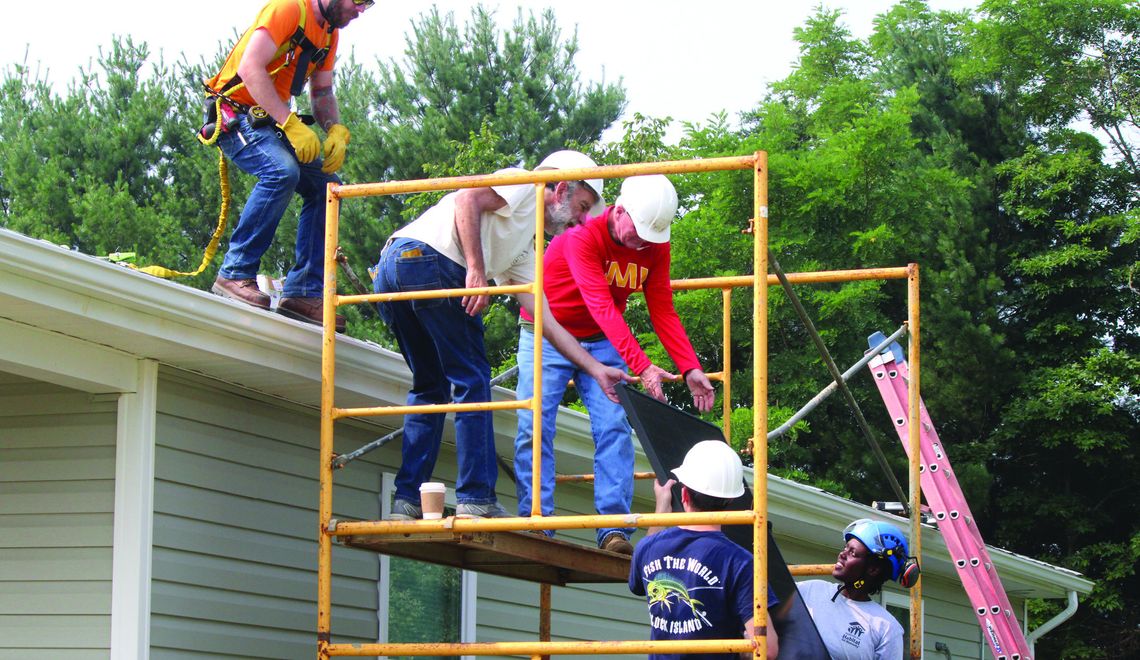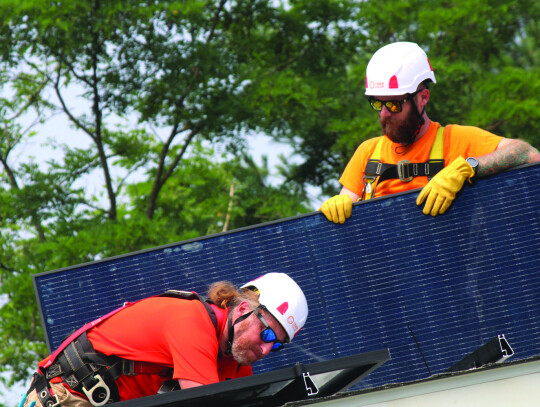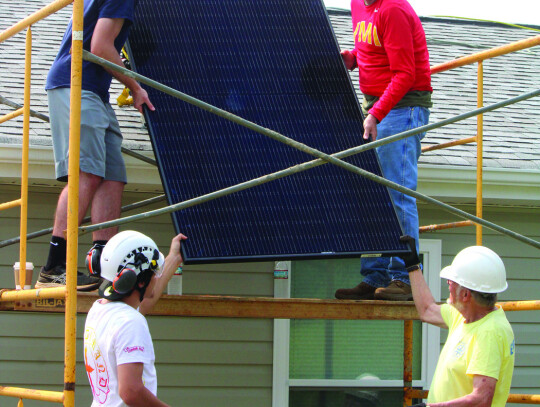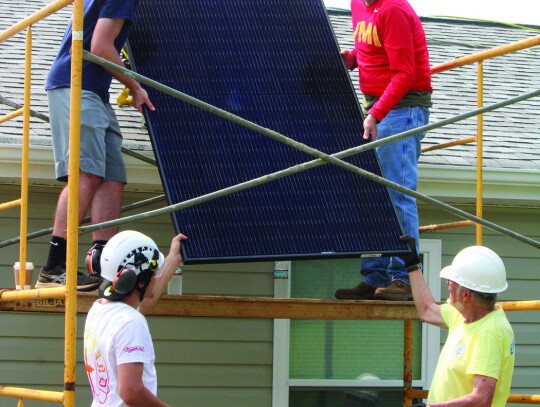Two Habitat for Humanity Houses on Spencer Court north of Lexington had solar panels installed last Thursday through a partnership with Virginia Habitat for Humanity and GiveSolar, a nonprofit that assists other non-profits and low-income home owners with gaining access to solar energy.
“Habitat prides itself on building affordable housing and this project is aimed at reducing energy burdens that Habitat families experience, trying to reduce their energy bills with solar power,” said Jeff Heie, director of GiveSolar.
Heie, a longtime advocate for solar energy, founded GiveSolar in 2020, initially partnering with Central Shenandoah Habitat for Humanity, which, like Heie’s nonprofit, is based in Rockingham County. After doing a “proof-of-concept” project in Harrisonburg, Heie began working with the Virginia Habitat for Humanity organization to get solar panels on as many Habitat homes as pos- sible. Last June, another Habitat house on Spencer Court received solar panels courtesy of GiveSolar.
One of the primary goals of installing solar panels on these homes is to help relieve some of the costs of utilities for the families living in them.
“We’re expecting these systems to eliminate the majority of these homeowners’ electric bills, so it should save them approximately $65-75 per month on average,” Heie said. “In Virginia, the issue of inflation in energy costs is a big issue right now. The price of electricity where I live [in Harrisonburg] has gone up 30 percent in the past two years. A lot people who are middleand upper-income can absorb those costs, but [for] low-income people, their utility bills make up a high percentage of their monthly income, so that 30 percent inflation is really hard for Habitat families to absorb.”
The number of panels installed on each house varies depending on the space available and the needs of the family living in the house, but most of the installs have been for 12 to 14 400 watt panels, which generate between 4,800 and 5,600 watts of electricity for the home. Other factors involved in determining which houses are good candidates for solar installs are the orientation of the roof (southoriented roofs are ideal) and whether the roof is shaded by trees or surrounding buildings during the day. Jonathan Lantz-Trissel, project manager for GiveSolar, noted that roofs on Habitat houses are “usually pretty good” for installing solar panels.
“They’re pretty wide open,” he said. “They don’t have a lot of fancy dormers and things that break up roofs and make it hard to install a large array.”
Several local organizations, including the Rockbridge Conservation and the Sunrise Rotary Club, contributed volunteers to last week’s installations.
Rockbridge Conservation (formerly RACC) worked with GiveSolar on the Habitat installation they did last year as well. One of Rockbridge Conservation’s main objectives is getting renewable energy sources to as many people as possible. The biggest hindrance for some households is the upfront cost, which can be “in the neighborhood of $10,000” for an installation like what GiveSolar puts in, according to Bob Biersack, president of Rockbridge Conservation’s executive committee.
“We’ve always thought that it shouldn’t be the case that the only people who can get benefits from this are people who can afford the upfront cost,” he said. “Many of us are in a position where we can do that, but these folks in particular … they’ve made this investment, they’ve committed to doing this house, so they should be able to get the benefits of that kind of renewable energy too, but they can’t afford the upfront cost.”
GiveSolar, he added, “sounded like the perfect answer to that particular problem.”
Heie hopes to ramp the project up over the next couple years thanks to a $500,000 donation GiveSolar received from the American Institute of Architects in Washington, D.C. His goal is to do between 70 and 80 solar installations on Habitat homes throughout Virginia in the next two years.
The two houses on Spencer Court the organization installed solar panels on last week were the second and third houses toward that milestone, the first install happening on a house in Warrenton in late February.
Heie anticipates that some of those projects will be in Lexington and the surrounding area, especially as projects get underway in Rockbridge Area Habitat’s next development area on South Main Street. Biersack said that Rockbridge Conservation is anxious to work with both Habitat and GiveSolar on that development.
“We’re anxious to help them with things like getting the houses oriented to maximize the ability to do solar, [and] getting the basic construction of the house in place so it’s easy to put solar on those houses,” he said.
.jpg)





